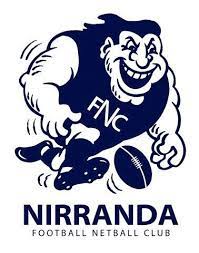In this COVID-19 world, food security has become very topical! With ANZAC Day tomorrow, it’s an opportune time to write about the Australian Women’s Land Army (AWLA). This was formed to ensure the supply of food and other vital produce during World War II.
My Grandmother Marian was a member of the AWLA, so I thought it would be good to share some of my grandmother’s experiences and provide links to other Land Army member’s stories. What they did should be considered groundbreaking (literally!).
What was the AWLA?
The Australian Women’s Land Army was formed in 1942 in response to labour shortages in rural industries as men went off to fight. Specifically, it aimed to meet the needs of industries that kept the military fed, clothed and equipped as well as maintaining food supplies for the Australian population.
AWLA numbers peaked in December 1943, with a bit over 2000 permanent members and 1000 part-time members. Once the war was over, the AWLA was disbanded. The women returned to their lives, though many remained on the land, often marrying men they had met during their service. In 1997 many members became eligible for the Civilian Service Medal.
Who were the women?
The women who joined the AWLA – aged 16 to 50 – were those who wanted to contribute to the war effort and had a sense of adventure. In the early stages, many recruits were originally from the country but the continuing need for labour meant women were recruited from urban areas, my grandmother amongst them.
They were given some instruction, and then sent off to rural communities to undertake whatever work was required. Full time members enrolled for 12 months of continuous service while part-time members worked for short periods of time, at key seasonal work. They worked for an average 48 hours a week, with a minimum wage of 30 shillings each week (here’s a maths question for the kids schooling @ home – what is that hourly rate converted to today’s prices!?). The women received ration cards for clothes, meat and butter that they handed in to the housekeeper whereever they were staying.
What work did the AWLA members do?
The work covered the whole range of agricultural production and processing. A typical AWLA member would move four to five times a year from job to job, according to seasonal demand. For Marian, those jobs involved farm work in Queanbeyan and Tamworth, picking prunes and almonds in Prunevale, cotton picking in Biloela and a final, long-term, position at Sydney University’s dairy research farm near Sydney.
For a girl who grew up in Double Bay in Sydney, the experience and skills she picked up were life changing: riding a horse, cutting wood, mending fences, digging dams, mustering stock, caring for chickens and pigs, rouseabouting, treating flystrike, “stooking hay”, rabbit control, cotton picking, milking cows, ploughing, keeping breeding/feeding records. She recalled about one of her placements:
“They were kind and practical and included me in all their family outings. They never stopped me doing anything because I was female but always asked if I was happy to try it, and of course I always did. I loved my time there. I loved the hard physical work. I felt so fit and strong and I loved the animals and the country and the solitude of the bush…My days in the Land Army were some of the happiest in my life.”

The need for flax
While the shortage of labour was felt across all agricultural industries, flax was a crop given highest priority. The war in Europe saw Britain lose flax supplies from Russia, Belgium and Ireland. This meant a shortage of a product that was vital for military equipment such as uniforms, tents, rope and parachute harnesses. Australia responded to Britain’s need and increased the amount of pasture sown to flax 20 fold in 3 years, much of it in Victoria. The demand to harvest and process flax was met by the AWLA. Below are some thoughts from Isobel Anstee, who was interviewed about her time in AWLA including working in the flax mills at Lake Bolac:
“From 1942-45 the strongest claim for help was for flax work. No soldier’s coats or packs etc could be made without linen thread. The RAAF needed parachute harnesses all made with linen thread. The RAN needed canvas ropes, so did the Merchant Navy.
“Canvas hose pipes were needed by the ARP and civilian fire brigades. Tents and tarpaulins were needed for all services.
“The Aussie flax producing the parachute harness and fire hoses complied with strict specifications of the British Admiralty and was used extensively also for covering gliders for the D Day landing and parachute drop into Normandy.
“They soon found that the often untrained help possessed initiative and ability to stand long hours in all weather. The women also adapted themselves to the isolation of jobs of many assignments.”
More women talk about their time working in the flax industry in this 15 minute interview (for those of you schooling @ home this is a perfect — and short! — ANZAC Day activity). Some of their photos are below.
Final thoughts…
I heard this recollection from AWLA member Peggy Williams on the radio recently. With the current challenges, it was a reminder to me of how we need to be understanding of each other, and work together to keep us all safe, healthy…and well fed 🙂
“When my brother wrote to me from the Middle East to say, “Don’t be working on the land for an Italian – I’m fighting them.” So, this day I was sent to work for an Italian – Mr Poppolato – and I said: “Look, I’m sick”. I think that man realized that I was just having my own little hate of him. So I sat under a tree all day and he was so kind to the Land Army girls – threw away their sandwiches and cooked them a meal. At the end of the day, he came to ask me how I felt, and he had a son that was fighting in the same unit with my brother. And I’ll never forget my feelings toward that man and what I was doing to that man. I went back on my weekends off and worked for him. Until the day that man died, he sent me cases of fruit, he came to Sydney to see me. So that story is always there.”
ANZAC Day 2020. Lest we forget.






























